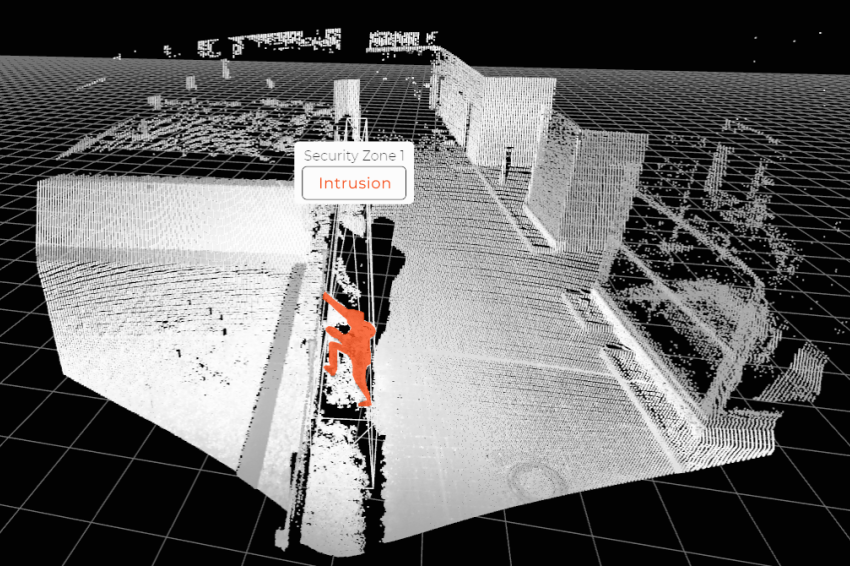Detecting Intrusions into Critical Infrastructure with Unrivaled Reliability
24.01.2024
- While the focus when protecting critical infrastructures in recent years has predominantly been on cybersecurity, current events have underscored the need to shift the attention to physical security again. For instance, substations are often the target of metal theft because valuable copper cables are installed or stored there. Intruders cause significant damage, breaking through gates and fences, resulting in substantial costs, some in the six-figure range.
Such incidents can disrupt the power supply and thus threaten public order and safety. Since substations are operated fully automated, without on-site personnel, intruders often have it too easy. Therefore, safeguarding against unauthorized entry, manipulation, or vandalism is crucial to prevent theft, property damage, or widespread power outages with their negative consequences for the community.
PIDS often Face Technical Challenges Like False Alarm
The example of substations clearly shows that fences alone often do not provide sufficient protection. Hence, there is an increasing reliance on Perimeter Intrusion Detection Systems (PIDS), including a mix of monitoring technologies designed to detect and warn about intruders promptly, enabling appropriate measures to be taken. However, current PIDS - typically using technologies like video, infrared, vibration, radar, or acoustic sensors - face technical challenges. Frequent false alarms, theft attempts, and data privacy issues lead to high manual verification efforts, alarm fatigue among personnel, and ultimately, substantial costs. Blickfeld is now introducing a reliable solution to these problems, a 3D LiDAR sensor with specialized on-device software.
3D LiDAR with Integrated Security Software
Blickfeld QbProtect is a new 3D LiDAR sensor with integrated perimeter protection software for zone, fence, and facade monitoring. This first smart LiDAR sensor for the security industry processes data on unauthorized entry on-device, without requiring additional computers, directly providing actionable results in common data formats. The sensor utilizes laser technology to reliably detect objects in diverse weather and lighting conditions, resulting in an extremely low false alarm rate and heightened security. Additionally, Blickfeld QbProtect is easy to install, standardized for integration into security systems, and can be set up via a graphical user interface using a drag-and-drop approach without programming.
Object Size-based Alarm Generation
Blickfeld's 3D LiDAR technology scans the environment using hundreds of thousands of laser pulses per second, generating precise and detailed 3D point clouds. Users can freely define security zones directly in the sensor’s software, specifying the size at which an alarm is triggered by an intruding object. This feature significantly reduces false alarms, excluding small animals or vegetation that may cause dozens or more false alarms per day with other sensor types. Setting up pre-alarm zones is also possible, where the system recognizes intruders upon approach but does not trigger an immediate alarm.
Designed for Demanding Outdoor Applications
The deployment of Blickfeld QbProtect is straightforward. Unlike other LiDAR sensors, no external computer needs to be connected, and data and power transmission takes place over the same line thanks to Power over Ethernet technology, minimizing cable requirements. Security personnel can integrate QbProtect into existing alarm systems without specialized LiDAR knowledge. Constructed according to the solid-state principle without mechanically rotating parts and with an IP67-rated housing against dust and water ingress, Blickfeld QbProtect is robust, durable, and low-maintenance.
Easy-to-Use solution to Reduce False Alarms
3D-LiDAR-based security systems are setting new standards for perimeter security systems. Their data precision, independence from weather conditions, and ability to minimize false alarms by capturing object size render them indispensable in safeguarding critical infrastructure. With the new Blickfeld QbProtect, a user-friendly and seamlessly integrable sensor that is customizable without programming is now available as a robust outdoor sensor complementing video or thermal camera-based systems. Users immediately benefit from significantly improved detection of unauthorized entry into sensitive areas, such as power plants, airports, or other critical infrastructure. Furthermore, the collected data is anonymous, making it privacy-compliant, unlike many other sensor types.
Author: Dr. sc. Florian Petit, Co-founder and CXO of Blickfeld
Contact
Blickfeld GmbH
Barthstraße 12
80339 München
Germany
+49 89 306935 00












